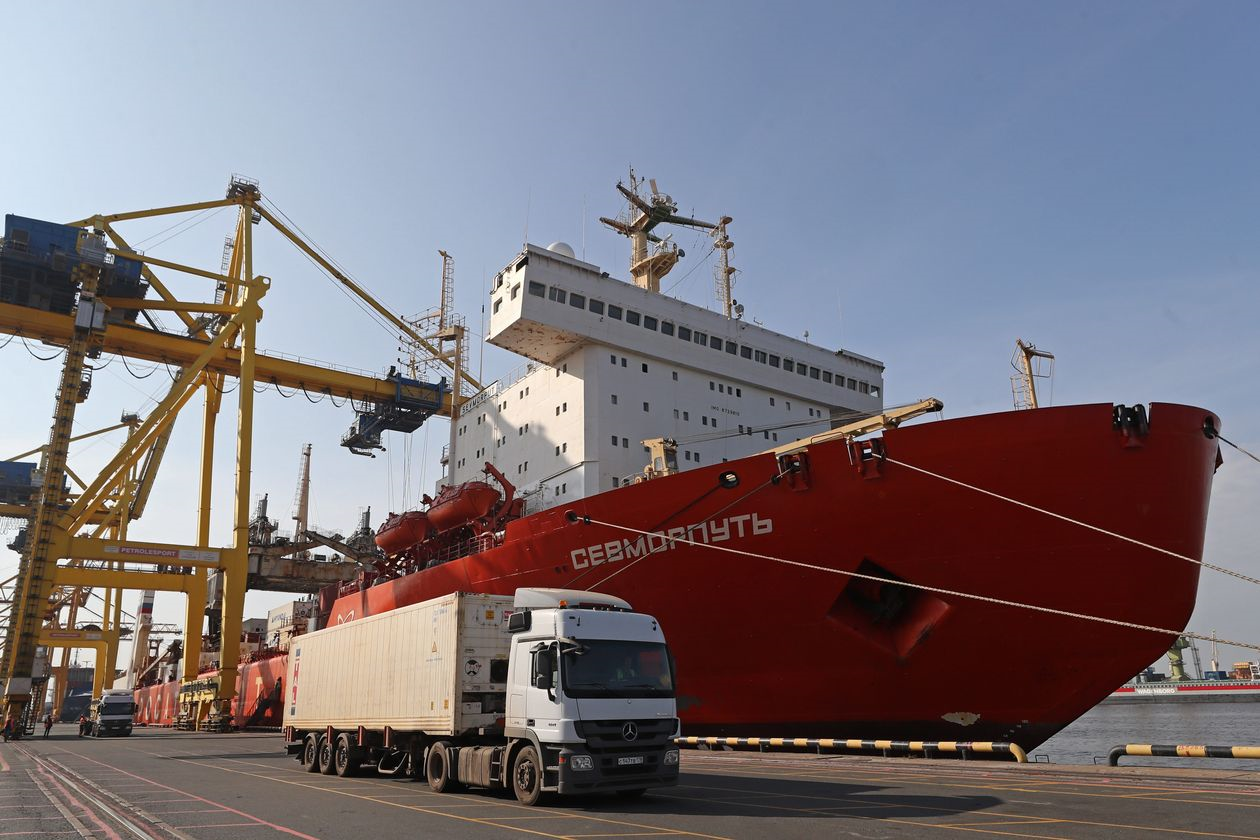
The Arctic has gone through its warmest summer on record. With the ice melting, more ships than ever are sailing along Russia’s Siberian coast, underscoring its role as a growing energy transport corridor and potential as a new ocean trade route. The Northern Sea Route, which runs from Alaska to the Baltic Sea, counted 71 vessels and 935 sailings across the waterway from January to June this year, according to the NSR information office. That was up by double digits from the same period a year ago and a big increase from the 47 vessels and 572 voyages in the same period of 2018.
The mostly frozen seaway is used in warmer seasons to move some of Russia’s energy exports to overseas markets. Container ships and general cargo vessel operators also have used the route to move goods between Asia and Europe. It cuts an average of 10 days of sailing time than the standard route through the Suez Canal.
Freight transport on the NSR is at its highest from July to November. Some sailings also take place in the rest of the year, and the Russian government expects ice-free year-round trips largely starting in 2024.
“There are many more ships because the ice is thin and you can sail without the help of icebreakers,” said Arne O. Holm, editor in chief of the Norway-based High North News, which monitors the NSR. “The NSR needs a lot of investment to attract bigger cargo vessels, but activity is picking up, and if the ice keeps melting, it will be another option to move cargo from northern China to Europe.”
The National Snow and Ice Data Center, a private, scientific research group supported by U.S. government agencies, said in September that this summer was the warmest on record in the Arctic, with the extent of sea ice across the entire Arctic shrinking to 3.74 million square kilometers, or 1.44 million square miles. That’s not much more than half the average ice cover of 6.7 million square kilometers measured from 1979 to 2000.
“There was no ice at all across the coastline in September, no need for icebreakers or ice-hardened vessels,” said Nikos Papalios, a mechanic on a crude tanker that sails the NSR.
“It stayed above freezing for 10 days, from the port of Sabetta to the Bering Strait, and it was pleasant to sit on the deck. It felt out of place,” Mr. Papalios said.
Most vessels operating in the NSR are natural gas carriers and oil tankers carrying exports to European and Asian customers from Novatek’s Yamal liquefied natural gas project and Gazprom’s Novy Port crude oil project the Yamal Peninsula along Russia’s northern coast. These heavily reinforced ships are built to move through ice-filled waters and cost more than $200 million each, more than twice the price of similar-size ocean vessels.
Russian President Vladimir Putin has said the NSR would be key to develop the Arctic and become a global transport route.
The Russian government expects cargo volumes across the waterway will reach 32 million metric tons this year, up 78% from 18 million metric tons in 2018. Novatek expects to ship about 52 million metric tons of LNG a year by 2030.
Brokers said container ships and bulk carriers operated by Cosco Shipping Holdings Co. Ltd., Nordic Bulk Carriers A/S, and Norway-headquartered Golden Ocean Group are active in the waterway. Denmark’s A.P. Moller-Maersk, the world’s biggest container ship operator, sent a 3,600-container ship from Vladivostok in the Russian Far East to St. Petersburg in late 2018 laden with frozen fish to explore the NSR’s potential.
But there are limits to the waterway’s potential role in global trade.
Cargo between Asia and Europe is handled by massive ships that can carry more than 20,000 containers each. Parts of the NSR are too shallow for anything larger than 5,000-container vessels, and there are no transshipment ports.
Early hopes of big Chinese infrastructure investments also are fading. State-owned transport giants like Cosco and China Merchants Holdings Ltd. are pouring billions into linking ports with roads and rail to connect Asia and Europe under the Belt and Road Initiative rather than step up investments in the Northern Sea Route.
French container ship major CMA CGM SA and German counterpart Hapag-Lloyd AG have said they won’t send ships on the NSR, citing concerns over the environmental protection.
“The NSR is growing, and it’s good if you want to move boxes quickly at a single destination port. But it’s not going to replace the Suez Canal,” a senior Cosco official said.
Source: WSJ
Copywriting and SEO by Lake Media
